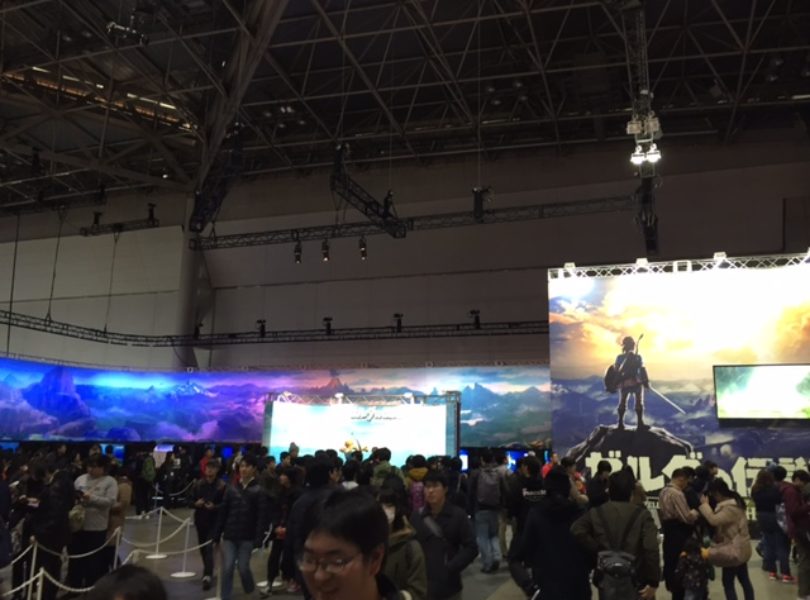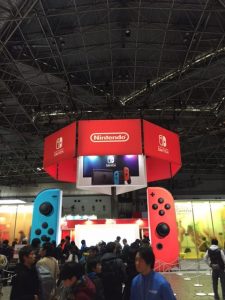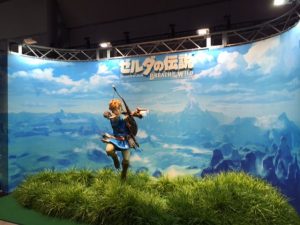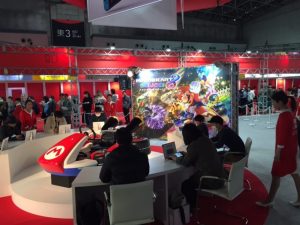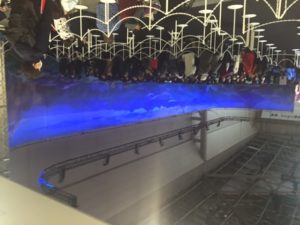Since the October reveal of the Switch, consumers and journalists alike have been more than eager to get their hands on Nintendo’s new hardware. With the triple headed announcement of a live presentation, in-house demonstrations, and even a huge world tour of public hands on events, the message to the masses certainly appears to be on the right track to lay the foundations for a successful 2017.
With all the rumors flying around months before that reveal trailer, the versatility of the console shown in many modern scenarios was at the forefront, leaving the balance of emphasis up to personal preference. Do you use it as a home console which occasionally is used for a road trip, or are you a constant traveler waiting for that Zelda world to get lost in in the comfort of your own living room?
There were a few aspects of the Nintendo Switch that President Tatsumi Kimishima et al had to secure the hearts, minds and cash of the awaiting gaming population.
The presentation started somewhat positively, with Nintendo announcing a deceptively close launch date of March 3rd – around 6 weeks. They also did a U-turn on their rigid region locked policy. The last region-free console was the DS, released over a decade ago, and while it may not bet so much of an issue, it is another antiquated feature that Nintendo have now conformed to. Likewise, the online account structure was the cause for some concern. Voice chat will be enabled by a smartphone app, and a paid subscription service with (a disconcertingly vague announcement) promises of monthly free titles. The app requirement on the surface might seem ‘old fashioned’ at best. I would guess that it is to let parents have as much control as possible in keeping with the family friendly mantra.
The extensive demonstration of the Joy-Con controllers was expected. It was informative, if initially amusing, but eventually over long. Synching up to eight Switches together highlights the possibility for titles like Splatoon, Mario Kart etc. It can’t be denied, like the Wii remote and the gamepad before it, that features such as a sensor in the controller and something lauded as ‘HD rumble’, there are a ton of opportunities for party style games, showcased by 1,2 Switch and ARMS.
While ARMS is being touted as ‘doing for fighting games what Splatoon did for shooters’ on a Nintendo console (Smash Brothers notwithstanding, but I’ll get to that later), 1,2 Switch is clearly this console’s Wii Sports. It’s the combination of two controllers out of the box with an eccentric, amusing and fun mini game collection.
So far, so Nintendo. But look past the shiny new toy and get into the heart of the matter concerning veteran fans, especially Wii U owners, and things started to break down.
First is the price point. I thought that $250 or $300 with a game (as it turns out, 1,2 switch or ARMS) included would have been satisfactory. Instead, it’s $300 without a game, and those two games are $60 each. That’s puzzling and slightly frustrating, but I will let that slide…
What stung is the price of the accessories. $80 for a pair of Joy-cons and $30 for the charging cradle is too much, period. An individual Joy-Con is $50. It is clear that there is a lot of new tech in these little things, but if the kids want one each, it will cost a significant amount. It is up to Nintendo to provide incentives like Wii Play bundles. From here, it was one awkward presentation and worryingly hazy announcement after another. This presentation was typically Japanese, from the stereotypes demonstrating ARMS to the sometimes stale and unscripted translations. Now, it all came down to the games, and especially the launch window.
To not have Zelda as a launch game, on the strength of this presentation alone, would have been a disaster. Thankfully from a gamer’s point of view, it’s happening. Mario Kart Deluxe releases on April 28th, Splatoon 2 in the summer, then the next 3D Mario in fall, along with (again, a concerningly absent HD suffix) Skyrim, FIFA (without a number) and NBA2K. No Metroid, no Pikmin, No Smash.
The rest may be too far out or too old to generate interest at the moment. There are ports of games going back to 2015: Discerna 5 and Rayman Legends, along with Just Dance and Lego City.
Now, the device will go into people’s hands. New information will come out leading up to launch, and the Treehouse event (Along with E3 especially) will hopefully pick up the slack. At the time of writing, the hardware is interesting, versatile and innovative, but the sparse line up of games in general, along with the expensive controllers leave me playing the waiting game. Again.
As grandiose as the public event was at the big Tokyo site, and by all accounts it was well attended, with timed ticket allocations being fulfilled for Splatoon 2 and Zelda before official opening time, the machine is aimed at younger audiences, with a price tag to make parents wince. As idyllic as a family of four playing Mario Kart 8 Deluxe was, the console, game, two extra Joyicons and four (admittedly optional) wheel brackets comes to $480. This thing cannot succeed at this price. Two Joy-cons might be enough for some families, but that is missing the problem.
It can’t be denied that the Nintendo switch has exciting potential, and Nintendo has never been a company to sell at a loss, but either this is going to be the 3DS all over again, or worse, the Wii U. I’m hoping there is another event before launch as a final push, because with no Virtual Console announced, no bundles/packed in game, skeletal launch line-up, an over-reliance on a Zelda title Wii U owners have waited for and an unattractive price, the Nintendo Switch will go into an endless cycle of not selling enough units out of the gate, and therefore will not entice 3rd parties. Nintendo had the world’s attention, but all the publicity in stores will not hide the fact that, for more seasoned fans and the gaming media, they have learned absolutely nothing from their mistakes over the last decade or so, and will send an admittedly neat piece of tech out to die.

